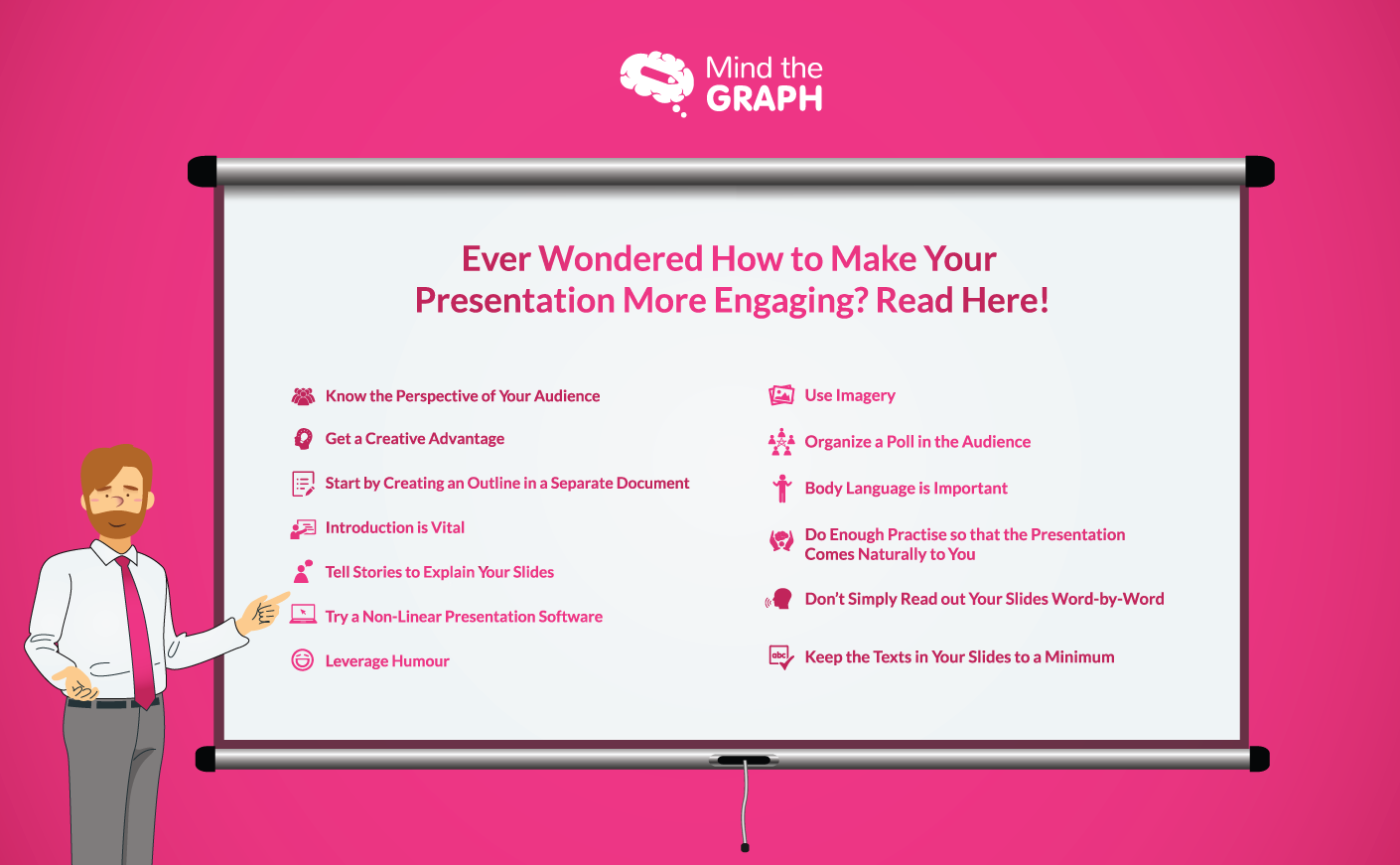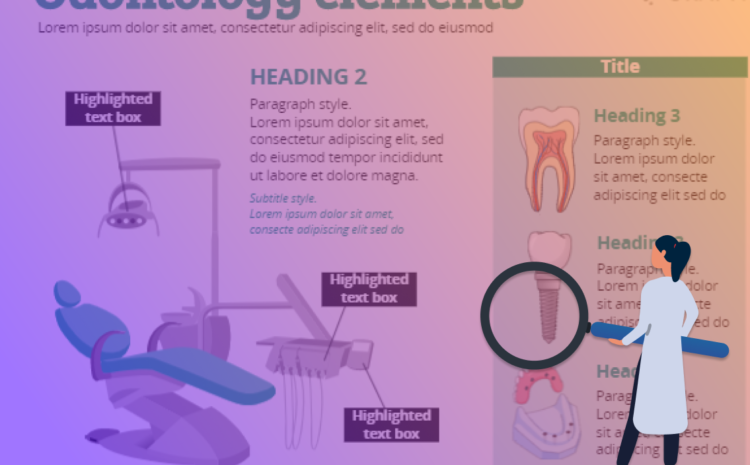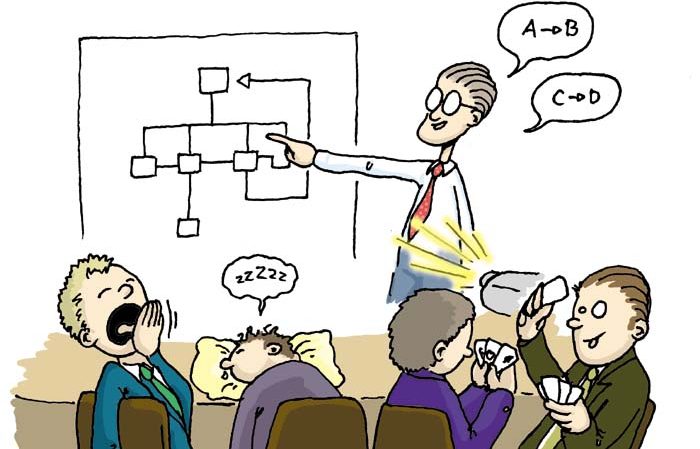You muster up the courage and give your presentation, only to find that most of the people seem to be lost in their own world. Frustrating right? We’ve all been there.
In fact, a survey done by Prezi reveals that more than half of the people do not listen to presentations. Instead, 28% sent text messages, 27% checked emails, and 17% admitted to falling asleep!
Of course, there are always going to be people who fall asleep. But, by making your presentation more engaging, you can reduce this number drastically.
When you engage with the audience during your presentation, you:
- Deliver the intended message
- Sound more authoritative and credible
- Get better grades if the presentation is for your research paper
- Or, convert more leads
When you engage with your audience more, you get a confidence boost. And this leads to an even better presentation.
So, if you’ve been wondering about how you can turn your presentation into a more engaging and fun one, then read one to learn some effective tips that actually work.

Know the Perspective of your Audience
Researching your audience beforehand is very crucial for a winning presentation. Unfortunately, this is often overlooked.
We often prepare for our presentation, run through it a hundred times, and see what we can add to it to make it better. But, above all that, what does the audience want is extremely important.
For instance, if you prepare for your presentation well but use millennial lingo in an audience full of people in their 50s, then your presentation is definitely going to fall flat. So, knowing the audience is super-important!
- While preparing for your presentation, try to research and understand what kind of people would be there.
- You can follow the method of what marketers’ call the “ideal customer persona”. To do so, simply figure out answers to these questions about your presentation audience:
- What age group would they fall in?
- What would be their level of expertise in the subject you are presenting?
- What would be their pain points related to your subject?
- What are their interests in general?
- What type of content would they most relate to?
Understanding these aspects about your audience will help you to deliver your presentation in the most impressive manner possible and you’ll get the right kind of attention that you are looking for.
Get a Creative Advantage
An audience will obviously be more engaged when the presenter delivers the message in a format that most resonates with them. You should also work with the same principle.
Give the audience what they want, and they will surely be more attentive and engrossed in your presentation. This goes back to the previous step where you researched your audience beforehand.
Depending on your audience and their interests, they would be interested in different types of content. Here are a few that could interest your audience:
- Graphs
- Images
- Memes
- Web series references
- Movie dialogue
Thinking about the types of content that you want to add to your presentation is essential. These data will help you form your main presentation copy and the creatives around it.
Start by Creating an Outline in a Separate Document
Never, ever, start your presentation without an outline. Without an outline, you might find yourself wavering from the important topics and talking about unnecessary points.
You can create a basic outline of your presentation which just puts down and organizes all the ideas that you have on your mind.
You can jot down the main topics, sub-topics, content format, and creatives that you would be adding to your presentation. You can even go a little further and add a few points that you would like to talk about under each topic.

This way, you’ll get a bird’s eye view of all the points that you want to present and help you navigate through the presentation creation process in a much more efficient manner.
Another plus about starting with an outline is that you will know how much time will each subtopic requires. This will help you manage your overall presentation time better, and add points to your presentation slides based on that.
It is also important to stick to your outline even while creating your presentation. Otherwise, you might end up investing too much time on information for the not-so-important topics.
While creating your presentation, if at all you feel the need to add more points, then think about it well instead of blindly adding more points.
Introduction is Vital
Your introduction can determine the entire course of your presentation. This is because people are often ready to give you a quick chance to impress them at the beginning of any presentation.

They’ll give you a few minutes of their attention, and you have to make sure that you sound the most interesting then. If your presentation doesn’t resonate well with the audience, then they’ll probably not pay much attention to the rest of it.
If the audience is already bored and sleepy because of a previous session or presentation, then you need to hook them in with a super-creative introduction.
You can do this by starting with:
- A meme
- A brief video
- A small, relevant Q&A session
- An eye-catching image
- A bold, questionable statement
- Or, a story
Your ideal customer persona plays a major role here. Knowing what your audience likes will help you to start with a perfect introduction that strikes the right chord with your audience.
Tell Stories to Explain your Slides
Storytelling can spruce up any presentation, no matter how boring or technical your topic is. Stories are a way to convey your message more entertainingly and engagingly. This is why you can seldom go wrong with stories.
One of the best ways to engage your audience is to start with a story. Something that is relatable to your audience and goes well with the topic at hand. Try this and you’ll see a much more engaged audience right from the beginning.
You can also include stories in the middle of your presentation when you might find people losing interest. This is, again, a great way to sustain the audience’s interest throughout your presentation.
Try a Non-Linear Presentation Software
A non-linear presentation can be a highly effective way to engage your audience. In a linear presentation, you would have to go from slide 1 to 2, 3, 4, and so on. You would have to go from one slide to the next in a linear fashion only.
Whereas, in a non-linear presentation, the slides are hyperlinked and structured like in the case of a website.
So, you would be able to jump to any particular slide on a subtopic that your audience may be interested in. You don’t have to navigate through all the slides linearly like in the case of a linear presentation.
A non-linear presentation can be super-helpful in engaging your audience as you would be able to click on the topics that your audience seems to be interested in. Therefore, you should consider trying a non-linear presentation software such as Prezi.
Leverage Humour
Humour may not be everybody’s strong suit. But today, there are so many means of expressing humor in the form of memes, videos, comics, and similar more. So, you do not have to be a humorous person to add humor to your presentation.
Does humor always work in a presentation? Mostly, yes! No matter how serious or technical your topic, you can always infuse a hint of humor into it. Even if you are in a room full of serious, middle-aged people, humor will work.
Humour can be an interesting element to add to an otherwise serious presentation in order to catch your audiences’ attention. A relevant meme can wake up a rather disengaged audience and give them the nudge to pay attention to the rest of your presentation.
Adding humor to your presentation can also help you to express your message and point of view better.
Just like stories, humor can make your presentation memorable. Even if your audience doesn’t remember the different slides that you explained, they will remember a good joke or a meme, for sure!
Use Imagery
As they say, one small image is worth a thousand words. This is literally true in the case of a presentation. You can express a thousand words worth of text in an image or infographic. This is exactly the reason why images are a must-have in your presentation.
Images have the power to completely transform your presentation. Imagine a presentation with lots of images that clearly put forth your point and another one with everything the same except the images. The first one would always be the winner.
Even if you summarize the meat of your presentation in one single image, that would make a world of difference to it. It will be the crux of your entire presentation and people will keep coming back to you just for that single image you used in the presentation.
This doesn’t mean that you should fill your presentation with irrelevant images, just for the sake of it. Your images should visually depict your topics and points in a way that is easily understandable by the audience.
You can create cool infographics and images that will perfectly complement your presentation using online tools.

You can try making graphs online using the powerful MindTheGraph tool. Adding this to your presentation will make a lasting impact on the minds of your audience.
Organize a Poll in the Audience
Having live polls for your audience is a brilliant way to fire up your audience and keep them engaged. Polls drive curiosity, make us think about the subject, and wake us from our sleep. Hence, you should definitely give this a shot!
If your presentation has any shocking facts or revelations to state, or if you just want the opinions of your audience, polls can be super helpful. Most non-linear presentation software comes with the provision to integrate live polls with our presentation.
Polls help to create a lively atmosphere and will give your audience a group experience. If your poll is interesting enough for everyone to participate, your audience will definitely leave with this thought in their mind.
Most of all, the main reason why a poll will work brilliantly is that it makes your audience feel like they are a part of your presentation and they have contributed to it in some way.
Body Language is Important
Body language is super-important for your presentation. Even if you sound confident, your body language might give away the fact that you are feeling nervous.
If you keep shifting from side to side and nervously fiddle with things, then your audience will notice that you are nervous. This will take away from your credibility and people might eventually lose interest, which is not something you want.

So, practice your body language beforehand. If walking around the dais comes naturally to you, then go for it. If you are not a dramatic persona in general, then it is best to stick to a steady stance, hand gestures to explain your presentation, and a confident gaze forward.
If possible, try to have eye contact with your audience. Speak to them directly instead of staring down or continually looking at your slide deck. This way, people who may have lost attention, will bring back their attention to your presentation.
Do Enough Practise so that the Presentation Comes Naturally to you
You can never be prepared enough for a presentation. The more you practice and perfect, the more natural it will sound. Get done with your deck way before the day of your presentation, so that you get enough time to practice it.
Remember that your presentation will only be as good as the way you present it. Even if you spent weeks perfecting your deck, you won’t be able to impress your audience if you don’t present it in the best way possible.
Don’t Simply Read out your Slides Word-by-Word
This is a mistake for amateurs, you definitely want to avoid that. Reading from your slides word-by-word will clearly show your audience that you are underprepared and you haven’t got enough expertise on the topic.
In fact, doing this may even feel like the idea is not original. Hence, even if you have added all your points to your slide, do not read from it. Instead, look at a slide once to know what it is about, then directly address your audience and convey the points in your own language.

Keep the Texts in your Slides to a Minimum
A presentation is not supposed to look like an article, a book, or a research paper. The main purpose of a presentation is to convey your information in a simple, easy to understand manner.
So, stuffing your presentation with walls of text is something that you must stay away from! Instead, add short and concise bullet points to your slides. Keep the number of points in each slide to a maximum of 3 to 5.
Break texts with images, infographics, memes, or any similar form of visual content. Ensure that your text is readable even from a long distance.
Instead of putting everything on your slide, try to just touch on important information in the slides and convey the best vocally.
Conclusion
To summarize, we can say that sounding fun and interesting is the best way to keep your users engaged. So, try these tips today. And, spice up your next presentation using stories, memes, audience polls, imagery, and similar more engaging elements.

Subscribe to our newsletter
Exclusive high quality content about effective visual
communication in science.




